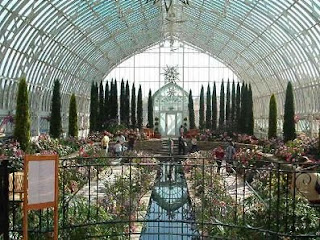Deforestation is the conversion of forested areas to non-forested land, for uses such as: pasture, urban use, logging purposes, and can result in arid land and wastelands. In many countries, deforestation is ongoing and is shaping climate and geography. Deforestation results from removal of trees without sufficient reforestation, and results in declines in habitat and biodiversity, wood for fuel and industrial use, and quality of life. Forests disappear naturally as a result of broad climate change, fire, hurricanes or other disturbances, however most deforestation in the past 40,000 years has been anthropogenic. Human induced deforestation may be accidental such as in the case of forests in Europe adversely affected by acid rain. Improperly applied logging, fuelwood collection, fire management or grazing can also lead to unintentional deforestation. However, most anthropogenic deforestation is deliberate. The scale of deforestation can be observed with the satellite viewing program Google Earth.
The consequences of deforestation are largely unknown and the impacts not verified by sufficient scientific data leading to considerable debate amongst scientists.
ATMOSPHERIC
Deforestation is on going and is shaping climate and geography.
Deforestation is a contributor to global warming, and is often cited as one of the major causes of the enhanced greenhouse effect. Tropical deforestation is responsible for approximately 20% of world greenhouse gas emissions. According to the Intergovernmental Panel on Climate Change deforestation, mainly in tropical areas, account for up to one-third of totalanthropogenic carbon dioxide emissions. Trees and other plants remove carbon (in the form of carbon dioxide) from the atmosphere during the process of photosyntesis and release it back into the atmosphere during normal respiration. Only when actively growing can a tree or forest remove carbon over an annual or longer timeframe. Both the decay and burning of wood releases much of this stored carbon back to the atmosphere. In order for forests to take up carbon, the wood must be harvested and turned into long-lived products and trees must be re-planted. Deforestation may cause carbon stores held in soil to be released. Forests are stores of carbon and can be either sinks or sources depending upon environmental circumstances. Mature forests alternate between being net sinks and net sources of carbon dioxide (see carbon dioxide sink and carbon cycle).
Reducing emissions from the tropical deforestation and forest degradation (REDD) in developing countries has emerged as new potential to complement ongoing climate policies. The idea consists in providing financial compensations for the reduction of greenhouse gas (GHG) emissions from deforestation and forest degradation".
The worlds rain forests are widely believed by laymen to contribute a significant amount of world's oxygen although it is now accepted by scientists that rainforests contribute little net oxygen to the atmosphere and deforestation will have no effect whatsoever on atmospheric oxygen levels. However, the incineration and burning of forest plants in order to clear land releases tonnes of CO2 which contributes to global warming.
Forests are also able to extract carbon dioxide and pollutants from the air, thus contributing to biosphere stability.
More about Deforestation? click here


